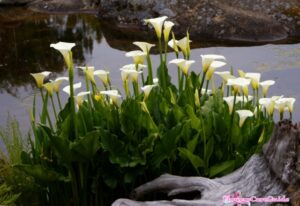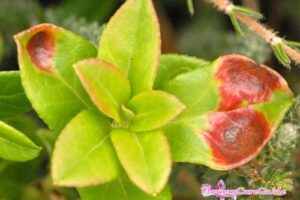What is Silver Lace Fern?
Silver lace fern belongs to the brake fern species that grows a cluster of flat, pointed, oval-shaped leaves. Each leaf of this plant contains a splash-like figure of white color in the middle surrounded by the green border from which the plant got its name. The scientific name of silver lace fern is Pteris Ensiformis ‘Evergemiensis’ and it is naturally found in Southeast Asia.
The silver lace fern is ideal for decorating indoor spaces. The plant thrives very well in a moist climate under the shade. If you’re thinking about keeping the plant at your place, here is a complete guide for you on silver lace fern care.
Lighting
Like most ferns, the silver lace fern does not grow in bright sunlight. In the Southeast Asian region where they are found naturally, they receive bright indirect light filtered from the canopy of the tall green trees. This makes it easy to keep these plants in our homes and workplaces. The best place to keep them in a room is beside the window where they can expose to the bright sunlight that reaches its leaves after filtering from the window curtains or colored glass. If there is not suitable sunlight for the plant, you can also keep them under artificial LED lights. But do not place the ferns under UV light, as these lights are harmful to the plants. This is the reason why you can’t place the ferns in direct sunlight.
Watering
Silver lace fern belongs to the region which receives a high amount of rainfall. Due to the thick canopy, the ground where this plant grows remains moist most of the time. If you’re keeping this plant in a pot, make sure you’re keeping the soil moist all the time. The right time to water the plant is when the topsoil appears dry to you. It’s a thumb rule for silver lace fern care to keep the topsoil damp all the time.
Substrate
For your brake ferns, choose the substrate that can hold a high amount of moisture so that the plant can get a regular supply of water for its normal growth. The plant also performs well in a fluffy, wet, and acidic mixture of soil. The soil should not be compressed too much. It should be soft enough so that the pulpy roots of the plant can penetrate through it to go deeper in the pot, but at the same time, it should be firm enough to keep the plant in an upright position.
The mixture of peat moss and soil or sand is ideal for the silver lace fern to grow. The root of the plant should be buried in the soil up to the rhizome, exposing only the top of the crown. The substrate should be well-drained but damp enough to supply water to its tiny stems all the time.
pH Preference
The evergemiensis silver lace fern can tolerate more alkaline nutrients as compared to other fern plants. The brake fern thrives best in soil that has a pH value of less than water. The fern’s ideal pH value is 6, but many variegated ferns can tolerate the pH value of 7 for a few months. Therefore, it is recommended to keep the soil slightly acidic for the fern’s natural growth.
How to Propagate Silver Lace Fern
When the silver lace ferns produce on their own, they use the spore method in which the new colony emerges from the parent clump. But gardeners follow a different approach and divide the rhizome into several pieces to produce a new batch of ferns. The silver lace fern can be grown with just a stem and frond. These small portions of the plants are enough to grow an entirely new clutch of foliage from the parent plant. This new clutch of foliages starts shooting from the parent clump, and when their roots become large enough, you can transfer the plant into a different pot. The new plant demands a little extra care and you’d have to supply enough water to the plant.
Vivarium for Silver Lace Fern
Evergemiensis silver lace ferns like empty surroundings to thrive. So it is best if you place them at a place which is not too tight, such as near other plants or in corners. The brake ferns also perform well in different types of vivariums. Paludariums, which are half aquatic and half terrain features, is good for the growth of these plants and it also increases the beauty of the place where you have placed them. Terrariums, in which the entire area resembles fully terrain features without any aquatic features, are also one of the best choices to plant the ferns. They enliven the place with their presence and do not demand much care from you.



